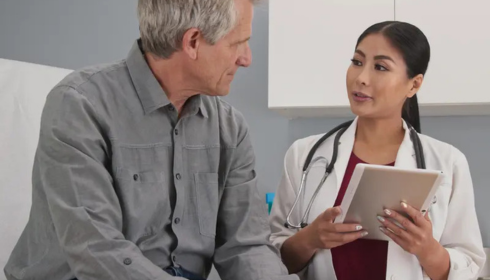Nobody ever wakes up thinking about their aorta. It’s one of those parts of the body we take for granted, pumping away, quietly holding us together. Until one day, a scan or a doctor’s voice changes everything. Suddenly you hear the words “aortic aneurysm,” and the ground shifts beneath your feet.
An aneurysm doesn’t feel real at first. It’s often silent, lurking without symptoms, until it’s found by chance. But the weight of knowing it’s there — a weakness in one of your body’s most vital highways — is enough to stir up all kinds of fear. That’s where surgery enters the conversation. And while the thought of it can feel overwhelming, the truth is that it can also be the lifeline that brings relief and peace of mind.
Starting the Search for Answers
For many, the first instinct after a diagnosis is to open a laptop and type something like aortic aneurysm surgery near me into the search bar. It’s not just about finding a surgeon close by; it’s about seeking reassurance. Who’s experienced? Who can be trusted? Who will take the time to explain what’s happening in a way that makes sense?
That search marks the beginning of a journey — one that blends medicine, fear, resilience, and the hope of finding the right team to carry you safely through.
Why Surgery Matters
An aneurysm isn’t something you can wish away. Left untreated, it carries the risk of rupture — an event as catastrophic as it sounds. Surgery, whether open repair or minimally invasive, is about prevention. It’s about stepping in before disaster strikes, about trading uncertainty for a fighting chance.
Patients often describe the strange mix of emotions leading up to surgery: fear of the procedure itself, but also relief that something proactive is finally being done. That duality — dread and hope at the same time — is a deeply human part of the experience.
The Role of Specialized Centers
Not all hospitals are equipped the same way. That’s why programs like NTX aortic aneurysm surgery stand out. These aren’t just operating rooms; they’re carefully built systems designed for complex vascular care. Teams of surgeons, cardiologists, anesthesiologists, and nurses work together with one mission: keeping patients safe and giving them the best outcomes possible.
For patients, the difference is noticeable. It’s not just about the technical expertise — though that’s critical. It’s also about how these teams communicate, how they prepare you for what to expect, and how they support you afterward.
Advances That Change the Landscape
Decades ago, repairing an aneurysm meant a large open surgery, long hospital stays, and a tough recovery. Today, many patients qualify for less invasive techniques that make the journey easier.
One of the most significant advances has been EVAR surgery — endovascular aneurysm repair. Instead of opening the chest or abdomen, surgeons guide a stent graft through small incisions in the groin, reinforcing the weakened section of the aorta from the inside. Recovery is faster, pain is less intense, and risks are reduced for many patients.
It’s not the right option for everyone, but when it works, it can feel almost miraculous compared to older methods.
The Emotional Side of the Operating Room
Behind the sterile lights and precise movements of surgery lies something harder to measure: the human heart. Patients walk into these procedures carrying fears about mortality, family, and the unknown. Surgeons, too, carry a weight. They know what’s at stake, and they feel the responsibility with every stitch, every decision.
One surgeon once put it this way: “We don’t just repair vessels. We give people back their futures.” That perspective highlights the truth of these operations: they’re about life, not just anatomy.
Families in the Waiting Room
If you’ve ever sat in a hospital waiting room during a loved one’s surgery, you know the way time stretches. Every minute feels like an hour. Every passing nurse feels like a messenger. Families hold onto hope in those rooms, often without realizing how much their presence matters.
When recovery begins, they’re the ones who help patients navigate the first unsteady steps, the medication schedules, and the emotional ups and downs. Their role isn’t always visible in medical charts, but it’s just as critical as the procedure itself.
Recovery: The Long Game
Surgery doesn’t end in the operating room. Recovery can be slow, and patients sometimes underestimate how long it takes to feel normal again. Fatigue lingers. Emotions swing between relief and frustration. Scars — physical and emotional — remind people of what they’ve been through.
But as weeks pass, strength returns. Walking gets easier. Energy builds. And somewhere in the process, patients realize they’ve crossed a threshold: the aneurysm that once loomed so large is no longer a daily shadow.
The Practical Realities
No one likes to talk about cost, but it’s part of the journey. Aortic aneurysm surgery is complex and expensive, and insurance approvals can be stressful. Hospitals with strong patient support teams often help families navigate this side of care, easing a burden that can feel overwhelming.
It doesn’t erase the financial strain entirely, but it helps families focus more on healing and less on paperwork.
A New Perspective on Life
Patients often emerge from surgery with a renewed perspective. Facing mortality so directly has a way of rearranging priorities. Some describe newfound gratitude for small moments — sitting in the backyard, hearing laughter, feeling the sun on their face. Others take bold steps they’d been putting off, whether traveling, reconnecting with loved ones, or simply living more intentionally.
That’s one of the quiet gifts hidden in the ordeal: not just survival, but transformation.
A Thoughtful Ending
An aortic aneurysm diagnosis can feel like a storm cloud you can’t outrun. But surgery, in its many forms, offers a way through. It’s not without risk, not without fear, but it carries with it the promise of more life, more time, and more moments worth savoring.
If you find yourself at the start of this journey, know this: you’re not alone. Specialists, families, and communities stand ready to support you. And while the road is daunting, it’s also filled with hope.
Because at the end of the day, aortic aneurysm surgery isn’t just about repairing arteries. It’s about preserving futures — and there’s nothing more human than that.

